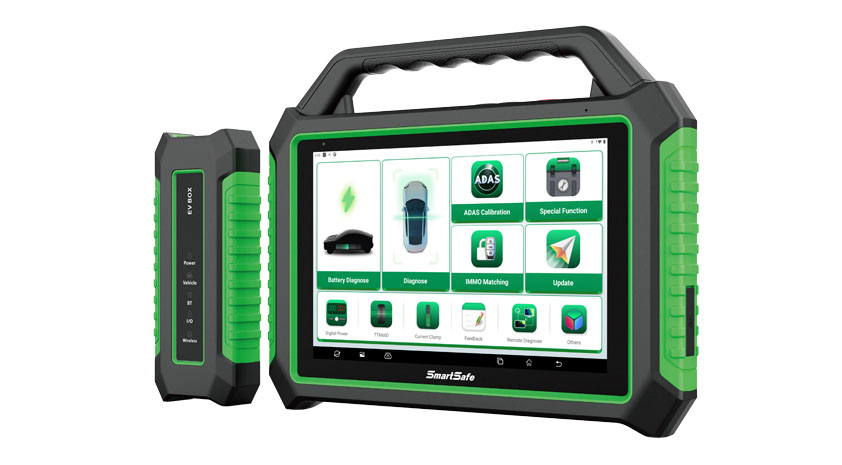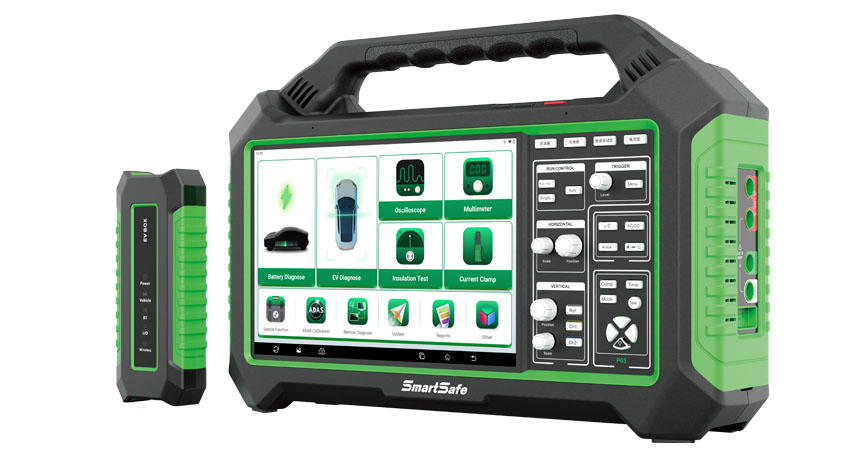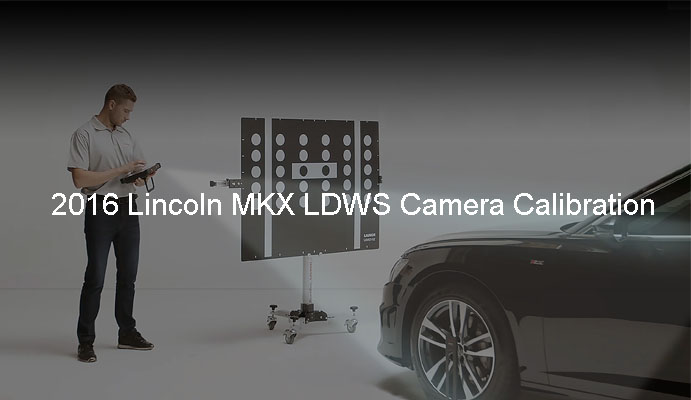
Electric vehicle batteries, which store electrical energy in chemical form and provide the electric motors and the energy needed to propel the vehicle, are at the heart of electric and hybrid vehicles. There are many types of electric vehicle batteries, the following are common types of electric vehicle batteries:
① Lithium-ion batteries: Lithium-ion batteries have high energy density, and they can store large amounts of energy in a relatively compact and lightweight package. Known for their durability and ability to provide consistent performance, lithium-ion batteries are the most common type found in modern electric vehicles.
Life expectancy: Lithium-ion batteries typically have a lifespan of 8 to 15 years, depending on factors such as temperature, depth of discharge, and overall care.
② Nickel-metal hydride (NiMH) batteries: Nickel-metal hydride (NiMH) batteries are often used in hybrid vehicles, and they have a long service life and good energy density. Nickel-metal hydride (NiMH) batteries are larger and heavier than lithium-ion batteries.
Life expectancy: Nickel-metal hydride (NiMH) batteries have a longer lifespan than lithium-ion batteries. Properly maintained, they typically last over 1,000,000 miles or more.
③ Solid-state batteries: Solid-state batteries use solid electrolytes instead of liquid electrolytes, which have potential advantages in terms of energy density, safety, and charging. It is an emerging technology that holds promise for future electric vehicles. However, technology is still in the research and development stage.
Life expectancy: The life expectancy of solid-state batteries has not been determined as they are still in the development and testing phase.
Regular maintenance, proper charging practices, and following manufacturer guidelines can help extend the life of EV batteries. When a battery reaches the end of its useful life, it may still have value in secondary applications such as energy storage.
While battery degradation is a natural phenomenon that occurs over time. Recognizing the signs of battery degradation is critical for EV owners to maintain peak performance. Here are some common symptoms that indicate battery degradation:
① Decrease in driving range: One of the most obvious signs is the reduction in the driving range of electric vehicles on a single charge. As battery capacity decreases, more frequent recharging is required to travel the same distance.
③ Slow charging time: Battery degradation will lead to longer charging time. As the battery's ability to accept and hold a charge decreases, it may take more time to fully charge, especially when using a fast charging station.
④ Decreased acceleration and power: As the performance of the battery degrades, its ability to provide power and acceleration may weaken. This can lead to slower acceleration and reduced overall performance, especially in high-performance electric vehicles.
⑤ Increased energy consumption: Under the same driving conditions, battery degradation will lead to higher energy consumption. You may notice that your EV needs more energy to travel the same distance as before.
⑥ Uncertain mileage range: As battery performance degrades, EV range estimation systems may become less accurate. It can overestimate the usable range, resulting in an unintended reduction in driving distance.
⑦ Fluctuating state of charge (SoC): A healthy battery should maintain a consistent state of charge under similar conditions. Battery degradation can cause more significant fluctuations in the SoC, making it difficult to predict the remaining charge.
⑧ Increased heat generation: The degradation of battery performance results in more heat that may be generated during charge and discharge cycles. This increase in heat can affect the safety and lifespan of the battery.
If the above symptoms are present, we can monitor the state of charge SoC. Monitoring the state of charge of an EV battery is an important aspect of EV ownership. The state of charge indicates the current level of energy stored in the battery as a percentage of its total capacity. Here are reasons why monitoring the SoC is important for EV owners:
① Optimized charging: By checking the SoC before charging, you can determine whether a full charge is required or whether a partial charge is sufficient for your immediate needs. Overcharging puts additional stress on the battery and can lead to accelerated battery degradation, so monitoring the SoC can help optimize charging practices.
② Efficient route planning: Some EVs are equipped with a navigation system that considers the current SoC to recommend routes with charging stations along the way. This ensures that you can reach your destination without voyage-related issues.
③ Preventing range anxiety: Range anxiety is a common concern among electric vehicle owners, that is, the fear of running out of battery power before reaching the charging station. Monitoring the SoC helps alleviate this anxiety by providing real-time information about the remaining battery charge.
④ Know about consumption patterns: Monitoring SoC over time can help you understand how driving habits and environmental conditions affect battery consumption. This knowledge allows you to adjust your driving style or route planning to maximize efficiency.
⑤ Battery health management: Regular inspection and tracking of SoCs can provide insight into the long-term health of EV batteries. A sudden drop in SoC or sustained capacity below, when the EV was new, can indicate degraded battery performance, prompting you to take steps to maintain or replace the battery.
⑥ Balancing battery cells: In some electric vehicles, monitoring the SoC helps ensure that the battery cells within the battery pack are balanced. Balancing ensures that each cell gets the same charge and discharge, improving the overall health and life of the battery.
In summary, monitoring the state of charge (SoC) is critical to maximizing the efficiency, performance, and lifetime of electric vehicle batteries. It provides EV owners with the information they need to make informed decisions about charging, driving and maintenance, ultimately enhancing the overall EV ownership experience.

1. Cover more than 95% of the whole system of EVs, and keep updating;
2. Supports testing of DC/DC converter, onboard charger, high-voltage distribution box,and other common maintenance functions
3. Provide four battery pack connection methods, including OBD, special connector, jumper connection and fast charging port connection
4. Equipped with battery pack professional connector as standard and integrated aviation plug connector to improve detection efficiency;
5. Support ADAS calibration, tread detection, insulation tester, oscilloscope, digital power supply, multimeter, current clamp, videoscope and other expansion modules;
6. Dual WIFI design, the host is connected to the VCI with independent WIFI, and the VCI does not affect the host accessing the Internet when it is working;
7. Provide the whole vehicle topological graph, clearly display the vehicle communication network, and quickly locate the fault point.
P03 EV Integrated Detection Tool:

1. Battery pack detection: support battery pack detection of passenger car and commercial vehicle battery brands, read SOC/SOH, monomer/module voltage, temperature, battery pack status and fault information, and automatically calculate total voltage and differential pressure , key index data such as the highest/lowest voltage, and automatically mark abnormal data;
2. Vehicle detection: support the whole system and full-function detection of EVs, such as code reading, code clearing, data flow reading, action testing, and special functions;
3. Fast charging port detection: connect the fast charging detection gun with Bluetooth, and read the battery pack data through the fast charging port of the vehicle to realize fast detection of the battery pack;
4. Maintenance function: support offline testing of DC-DC converters, OBC car chargers, air conditioner compressors, 48V light hybrid components, etc., and support 30+ common special functions;
5. ADAS calibration: supports ADAS system calibration of many models in Europe, America, Asia and China, and is compatible with all calibration main frames of ADAS calibration series;
6. Test report: support the display of battery pack test report, vehicle test report, ADAS calibration report, etc;
7. Software upgrade: support online upgrades, including model software, firmware software, and APP software;
8. Module expansion: support tread detection, digital power supply, oscilloscope, multimeter, current clamp, insulation test, endoscope and other functional expansions.
Return


